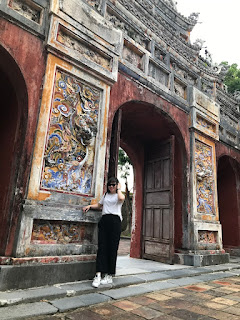Hue Imperial Citadel - Famous landmarks and useful information for tourists
Hue Imperial City - Famous landmarks and useful information for tourists
Hue Citadel or Thuan Hoa Citadel is a citadel in Hue, the capital of the Nguyen Dynasty for 143 years from 1802 until its abdication in 1945. Hue Citadel is planned on the north bank of the Perfume River, facing the South, with an area of 520 ha. The citadel has a circumference of nearly 10 km, a height of 6.6 m, a thickness of 21 m, with fortresses arranged evenly spaced, accompanied by cannons, cannons, and ammunition depots. Initially, the citadel was only built with earth, until the end of Gia Long's life, he started to build bricks. Outside the citadel, there is a system of moats surrounding the outside. Particularly, the canal system (Ho Thanh Ha) has both a protection function and a waterway traffic function with a length of more than 7 km.
Monument
Also known as the Flagpole, located in the middle of the southern face of Hue citadel within the Nam Chanh fortress is also the place where the imperial flag is hung. Ky Dai was built in the 6th year of Gia Long (1807) at the same time as Hue citadel was built. During the reign of Minh Mang, Ky Dai was repaired in 1829, 1831 and 1840.
Hue Imperial Citadel

It is the second citadel inside the Hue citadel, the residence of the king and the royal family, and also the working place of the court. In addition, Hue Imperial Citadel is also a place to worship ancestors and kings of the Nguyen Dynasty.
Forbidden City
Is the innermost citadel, located in the Imperial Citadel. The Forbidden City citadel was originally called Cung Thanh, was started construction in the 2nd Gia Long year (1803), the 2nd year of Minh Mang (1821) changed its name to the Forbidden City. Currently, most of the buildings in the Forbidden City have been degraded by time or destroyed during the war.
Is the innermost citadel, located in the Imperial Citadel. The Forbidden City citadel was originally called Cung Thanh, was started construction in the 2nd Gia Long year (1803), the 2nd year of Minh Mang (1821) changed its name to the Forbidden City. Currently, most of the buildings in the Forbidden City have been degraded by time or destroyed during the war.
Huong Rivers
More details: https://beautifullife-la.com/hue-imperial-city-famous-landmarks-and-useful-information-for-tourists/








No comments
Thank you very much for your reading !